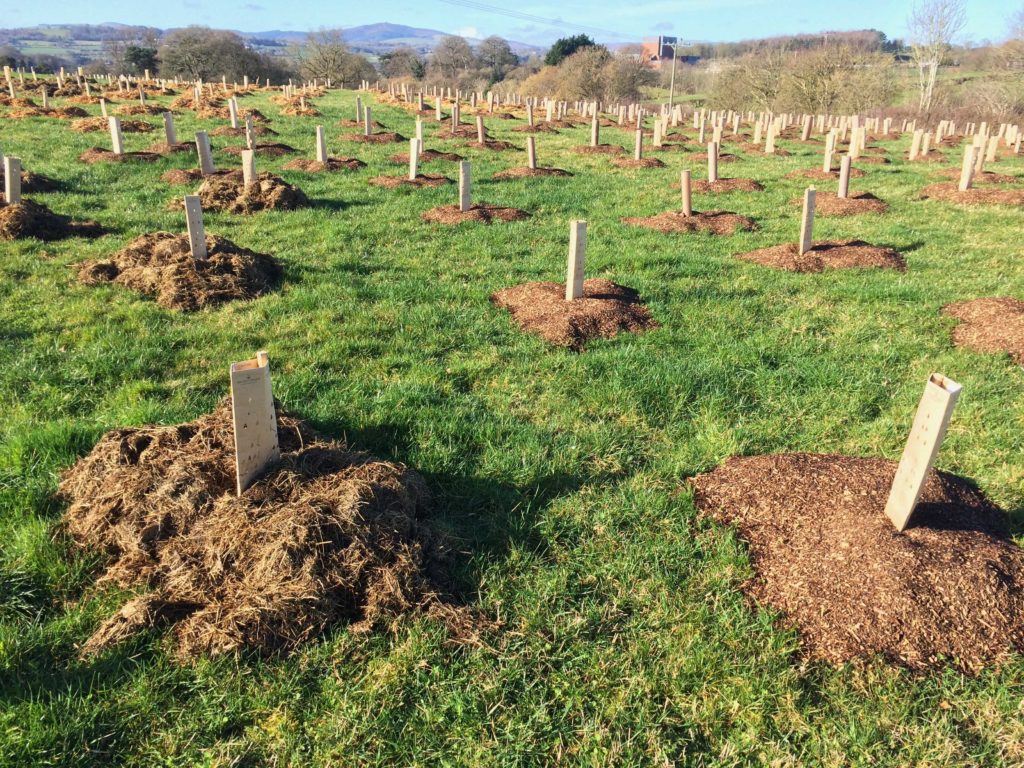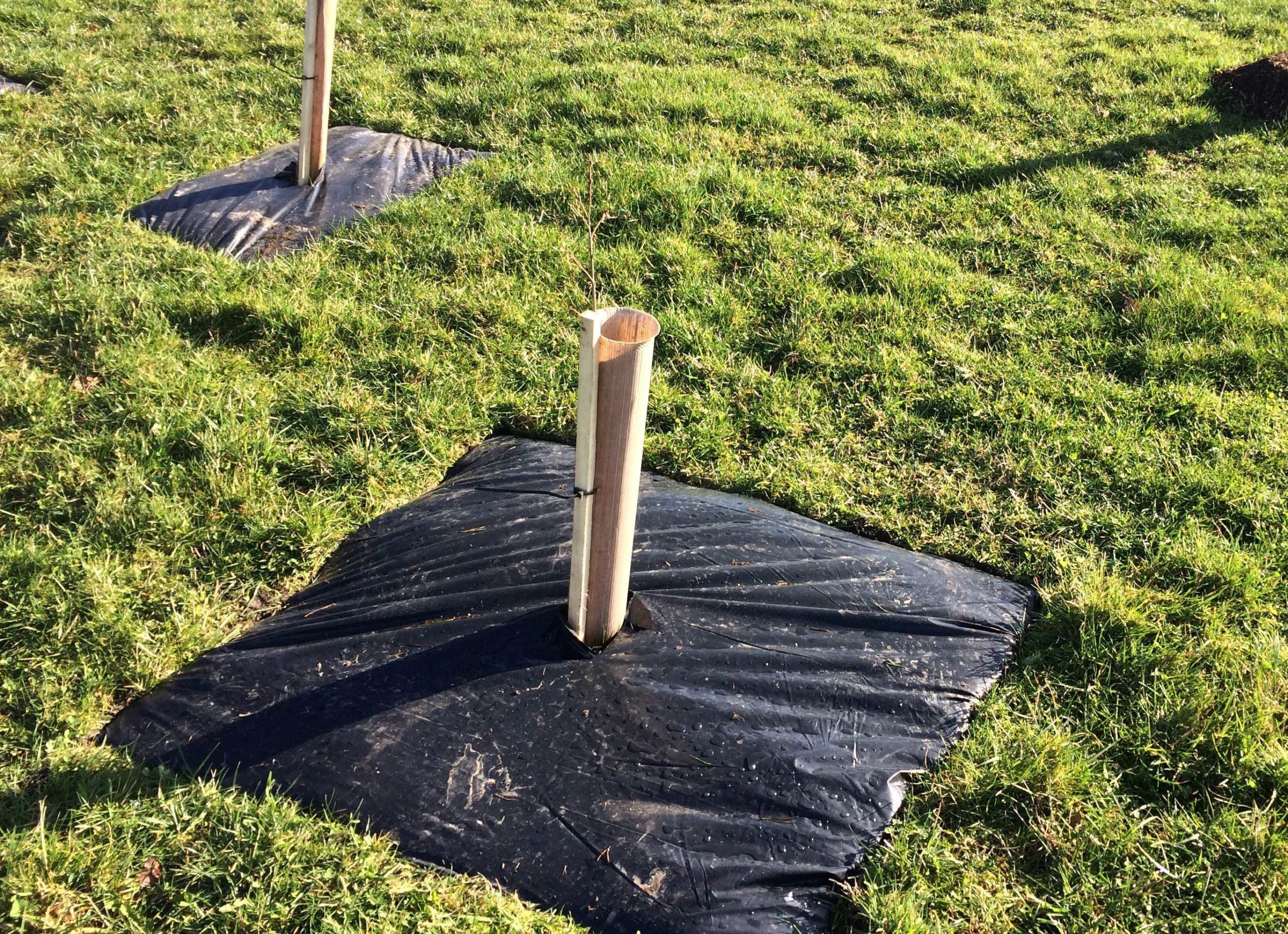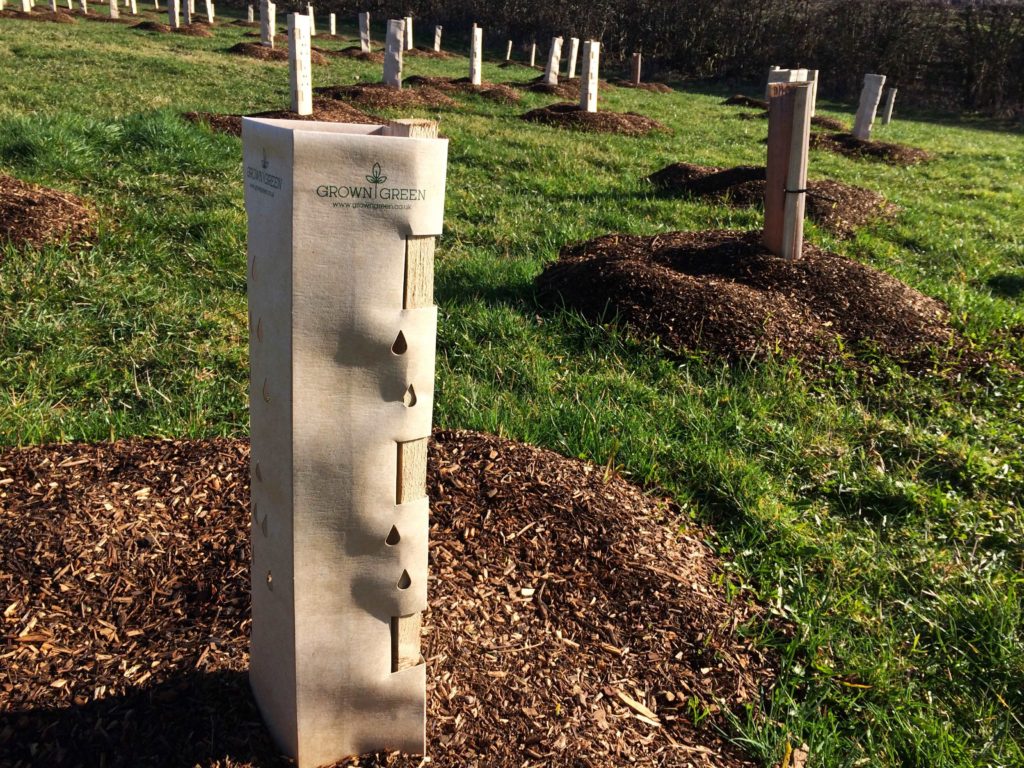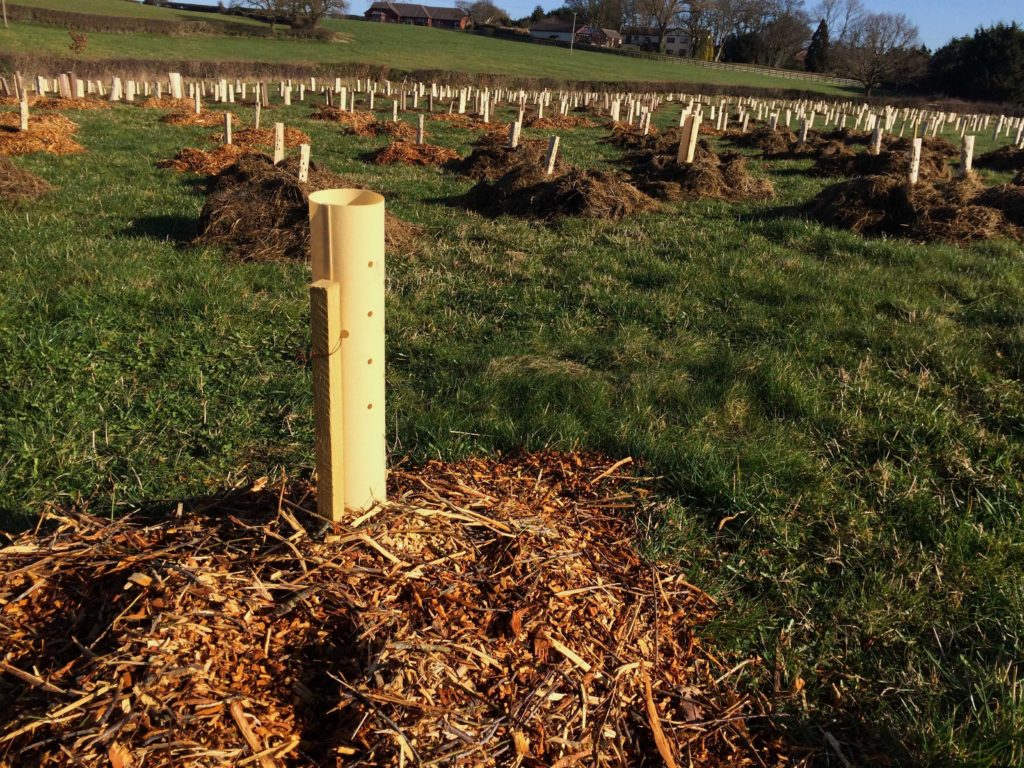
Fighting grass competition one barrow at a time
Stuart Taylor is a dairy farmer, his land looking over the market town of Yr Wyddgrug (Mold) in North Wales. I first visit in May 2022 as Stuart’s Woodland Management Planner, a new role for me. It was obvious as I cycled up the track from the busy bypass to his farmyard that my first client under the Welsh Government’s Woodland Creation Scheme was not one to be swept along with the tide of industrial ‘progress’ in farming. There are hedges here, thick, continuous, proud and flowering, buzzing with life, edging mob-grazed, species rich lays. His track is lined with a history of forays into the dark arts of woodiness.

400 trees worth of chip
The 3 hectare field earmarked for planting is a silage ley, inconveniently separated from the rest of his farm by a busy road. On the 1830s Welsh Tithe Maps it is marked as two fields named ‘Woody Piece’ and Old Wood Field’. The plan is a homecoming. After 15 years it is worn out as a silage field but for tree planting this is fine, fertile land. The grass is plenty vigorous enough to be an issue for establishing woodland and Stuart is aware that he is also not short of rabbits. The current standard response to these run of the mill tree planting challenges are herbicide patch treatments to knock out the grass and plastic tree guards to keep the rabbits at bay. In tune with the twin dialogues wrangling against biocides and plastics in our land-use practices going on throughout the forestry industry, this long-standing organic farmer bats emails to and fro with me for weeks interspersed with product research as he negotiates his options that will avoid these out-dated bads.

Side by side – chip and silage

Reusing plastic – Old silage wrap mulch and reclaimed plastic tube
Ultimately, Stuart has taken a varied approach to both dilemmas and the result is a really interesting test plot for woodland creation in grassland. He has planted his trees directly into the grass without any preparation and has mulched variously with semi-rotten woodchip, old silage or a layer of old silage wrap well pushed into the ground at its edges. The silage and wrap are from his own farm. but he has bought the wood chip from a local arborist company, delivered in by the 10-12 tonne load at a cost that works out at about £1 a tree. As well as the usual grass competition threat, Stuart is very concerned about how another drought in 2023 will impact his planting and he is laying the mulch on thick, the tree guards giving the additional service of preventing the rotting mulch from contacting the tree.

Using trees to grow trees – Cardboard GrownGreen guard and woodchip mulch
There are various plastic-free tree guard products being presented to market and these are really still in the test phase. Argoed Farm will be an important contributor to the growing knowledge on how these different products perform on different sites. In addition to the second hand plastic tree tubes Stuart gleaned from a neighbour in exchange for removing all the tree tubes from the site, he bought cardboard flatpack Grown Green tubes and cotton/resin composite bmptreehugger. When I visit in March 2023 he is already favouring the cotton product, that seems resistant to the wet weather and lets light through its walls to the whip. The cardboard tubes at about half the price go worryingly limp in the rain but stiffen up again when they dry. Their success may be a matter of the mulch working well enough so that the trees grow faster than the cardboard degrades.

New tech – BMPTreeHugger organic cotton guard with FSC resin
Thanks, Stuart, for this dedicated and pioneering piece of work. Hopefully I’ll be back to visit in a couple of years to see on how your various combinations of methods worked and poach your valuable insights for Part II of this blog.
